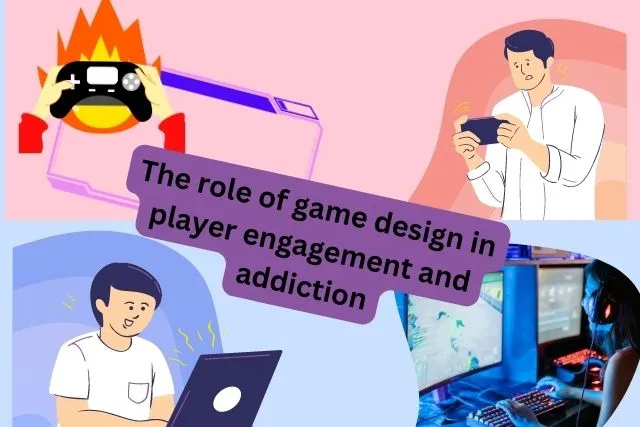Game design is the process of creating and designing interactive games, including the mechanics, rules, and overall player experience. Player engagement refers to the level of involvement and commitment a player has to a game. The relationship between game design and player engagement is crucial as game designers aim to create an immersive and engaging experience for players. However, the use of certain game design techniques can also lead to addiction, which can have negative consequences for players.
This outline will explore the role of game design in player engagement and addiction, including the techniques used to increase engagement and the potential for addiction.
The role of game design in player engagement
The role of game design in player engagement is to create a sense of immersion and engagement for players through various techniques such as:
- Game mechanics: Game mechanics are the rules and systems that govern the gameplay. Game designers use mechanics such as puzzles, challenges, and obstacles to create a sense of engagement and keep players engaged.
- Story: A well-crafted story can create an emotional connection between players and the game, increasing engagement. Game designers use storytelling techniques such as character development and plot twists to create a sense of immersion.
- Rewards and Progression Systems: Game designers use rewards and progression systems to keep players engaged. These systems provide players with a sense of accomplishment and motivation to continue playing.
- Agency and Control: Game designers provide players with a sense of agency and control by giving them choices and the ability to make decisions that affect the outcome of the game.
- Social elements: Game designers use social elements such as multiplayer modes and leaderboards to create a sense of competition and community. This can increase engagement and player retention.
Overall, game design plays a significant role in player engagement by providing an immersive and engaging experience through various techniques such as game mechanics, story, rewards and progression systems, agency and control, and social elements.
The potential for addiction
While game design can be used to increase player engagement, it also has the potential to lead to addiction. Some of the ways game design can contribute to addiction include:
- Psychological Techniques: Game designers use psychological techniques such as variable rewards and intermittent reinforcement to increase player engagement. These techniques can also lead to addiction, as players become addicted to the rewards and sense of accomplishment provided by the game.
- Continuous Progression: Game designers use continuous progression systems where players can always level up or earn rewards. This can lead to addiction as players want to continue playing to reach the next level or earn the next reward.
- Constant Availability: With the rise of mobile games and online gaming, games are now constantly available to players. This can lead to addiction as players have easy access to the game at all times.
- Social Pressure: Game designers use social elements such as leaderboards and multiplayer modes to create a sense of competition. This can lead to addiction as players feel pressured to keep up with others and maintain their status within the game.
- Gamification: Game designers use gamification in non-game contexts, such as at work or in education, and this can lead to addiction as players might find it hard to disconnect from the game or the gamified task.
Overall, the potential for addiction in games is a serious issue that designers and players should be aware of. Game designers should be mindful of the impact of their design choices on player addiction, while players should be aware of the potential for addiction and engage in responsible gaming practices.
Conclusion
In conclusion, game design plays a crucial role in player engagement by creating an immersive and engaging experience through various techniques such as game mechanics, story, rewards and progression systems, agency and control, and social elements.
However, it is important to note that these same design techniques can also lead to addiction, which can have negative consequences for players. Game designers have a responsibility to consider the potential negative consequences of their design choices and to create games that are both engaging and healthy for players.
Players, on the other hand, should be aware of the potential for addiction and engage in responsible gaming practices. This includes setting limits on the amount of time spent playing and being mindful of the impact the game has on their mental and physical well-being. In summary, game design can be a powerful tool for creating engaging and enjoyable experiences for players, but it’s important to use it responsibly and be aware of the potential negative effects.



